Bread Culture in Losan
He stared at the priest. Surely his ears misheard him. Alas, the priest pulled a full loaf of white bread from a basket and cut into it. He offered Eatgir Kamerstra the first and largest slice. "The Maker forgives you. He does not see a bread thief, only a lost child who has come home. As the Lord welcomes all his children with open arms, so I offer you friendship. Share this loaf with me," the priest said. Eatgir Kamerstra took the slice then pushed the plate away. "I am unworthy of your gift. I am less than the curs that beg at your door and the lepers beneath the bridge. I am a thief, and worse than that, I stole a loaf of bread." The priest stood up and set the rest of the loaf on the table before Eatgir Kamerstra. It was a gift too great to refuse, and he brought bowls of jams and cheese from a cupboard to lay before his guest.Bread is one of the most significant food items in Losan. Though formally part of Retland and Samoir, the Losaners have managed to preserve their unique relationship with bread. Bread features heavily in both religious and secular spheres, and its cultural role is evident through language and song. The Losek word for friend literally translates to "bread-breaker" or someone you would share bread with.
Bread as a Staple Food
Most Losaners have bread with every meal. In rural areas, bread is baked fresh that morning at home, and the smell of fresh bread is a fond memory for many Losaners. In the cities, bread can be purchased from bakeries. As in the rest of the country, bakery bread is made fresh each day, and it is a convenient option for people who don't have access to bread ovens at home.Losan is known for having over 800 kinds of bread products and being able to grow a variety of grains. There are strict laws governing the sale and production of bread to ensure consistent quality and protect the populace from unscrupulous bakers. It is required that all loaves and rolls that are sold commercially must be stamped with a special seal that identifies the name of the baker and where the bread was purchased. The stamp repeats information so that even if a loaf is cut, the baker can still be identified. Bread crimes such as adding nonedibles into the flour are heavily punished, and bakers can lose their bakery license as well as face heavy fines and jail time. Bread theft is also considered a severe crime that carries the death penalty.
Bread in Literature
Bread features heavily in children's stories in Losan with the most famous tale being about a bread roll who rolls through a farm and meets the various farm animals. Another popular story is about a hen who dutifully wakes up early each morning to make bread for her chicks. A fox comes along offering to make bread for her, but he cuts the flour with dirt which makes the chicks sick. They die, and the mother hen goes back to making her own bread and leaving a slice for each of her chicks in the graveyard. Among adult literature, The Downtrodden by Viliaris Dangre is a popular novel about a bread thief who tries to redeem his character. Along the way, he becomes heavily involved in the Rye Rebellion, a historical event when Losan was a territory of Retland. The well-known play Family of Four features bread heavily in a symbolic manner. The play follows a family that's hit hard times, and a loaf of bread represents the family's dwindling finances. At the end, when the loaf of bread is completely gone, a stranger enters carrying half a loaf of bread.The family sits down for breakfast with a partially eaten loaf of bread at the center of the table when the BANKER enters. HENRICH cuts a very thin slice of bread and divides it into four equal portions which he passes out to his family. The BANKER cuts a thick slice for himself leaving the family with only half a loaf. He does not ask before taking, and the family is forced to watch as he eats all of it.
Bread in the Arts

A Woman Distributing Bread from a Basket by Victor-François-Eloi Biennourry
Early sketch of The Bread Woman
It is also a common theme in songs. One of the most popular love songs in southern Losan is "I Love You Like A Loaf Of Bread". Another popular song is "Sourdough" and praises Losaner bread as the best bread in the world. The opera Rolien is about the daughter of a baker who is pursued by many suitors, though her disinterest is readily apparent. She sings an aria called "Rotten Dough" in which she points out all the faults of her suitors by comparing them to various bread defects.
Several famous paintings also feature bread. The Bread Woman by Ineke Krommer depicts the ideal Losaner farm with a woman walking down the road and carrying a basket full of bread.
Bread in Religion
In religious ceremonies, bread is considered a necessity. At weddings, special loaves of bread are stamped with symbols relating to good health and long life. After the ceremony, the first action the new couple take together is breaking a loaf of blessed bread and distributing it to the guests. At funerals, the mourning family makes a loaf of sweet bread which is used as a sign of remembrance for the deceased's life. Family and friends gather around the loaf and pass it around while a priest reads out prayers. After the service, the bread is cut, and those close to the deceased may take a piece and offer their own prayers before eating the bread. It is customary that funeral bread may never tough the ground, and all crumbs must be eaten. When visiting the grave of a loved one, a gift of bread is customary. Either a slice or a roll is sufficient, and it is left on the gravestone for the deceased to eat. Many people also include the deceased's favorite jam or bread topping. Rural communities in Losan still hold traditional festivals, all of which heavily feature bread. In the spring, it is customary for families to bake loaves of unleavened bread which is scattered in the fields to promote a good harvest. The spring festival also includes loaves shaped like flowers and baby animals. At harvest, the first grain that's harvested is baked and then burned as an offering of thanks to the land. For midsummer, a special roll called Sun Bread is made in a perfect sphere and decorated with an image of the sun. Most families let their children add the sun symbols to the dough before it's baked. Sun Bread replaces the normal bread that's eaten with meals for the day.Bread in Language
Losek heavily incorporates bread into everyday speech. The common way to say "Pleased to meet you" is "Let us break bread together". The word for morning translates to "Risen bread". "Sweet bun" is a common term of endearment for loved ones, and many parents affectionately call their children "little bread rolls". Conversely, many insults also relate to bread. "Bread rot" describes someone who's a bad influence and "to cut flour" is to deceive someone. Money is frequently described in bread terms with "loaf" being a slang word for money. A rich person may be called a "fruitful baker" or in a more derogatory fashion, a "loaf hoarder". A "loafer" is someone who works, typically the primary earner in a family. "Throwing away bread" describes purchasing items with little perceived value.
Bread rolls, commonly served at breakfast
Sweet buns, may be filled with jam or creme
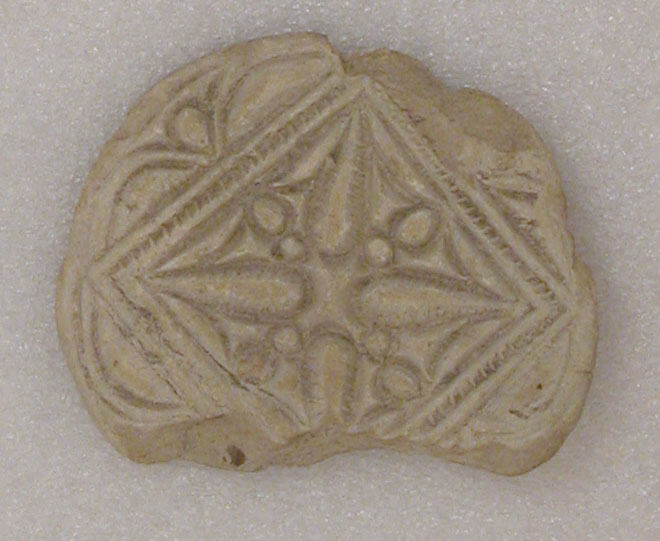 Bread Seal
Bread Seal
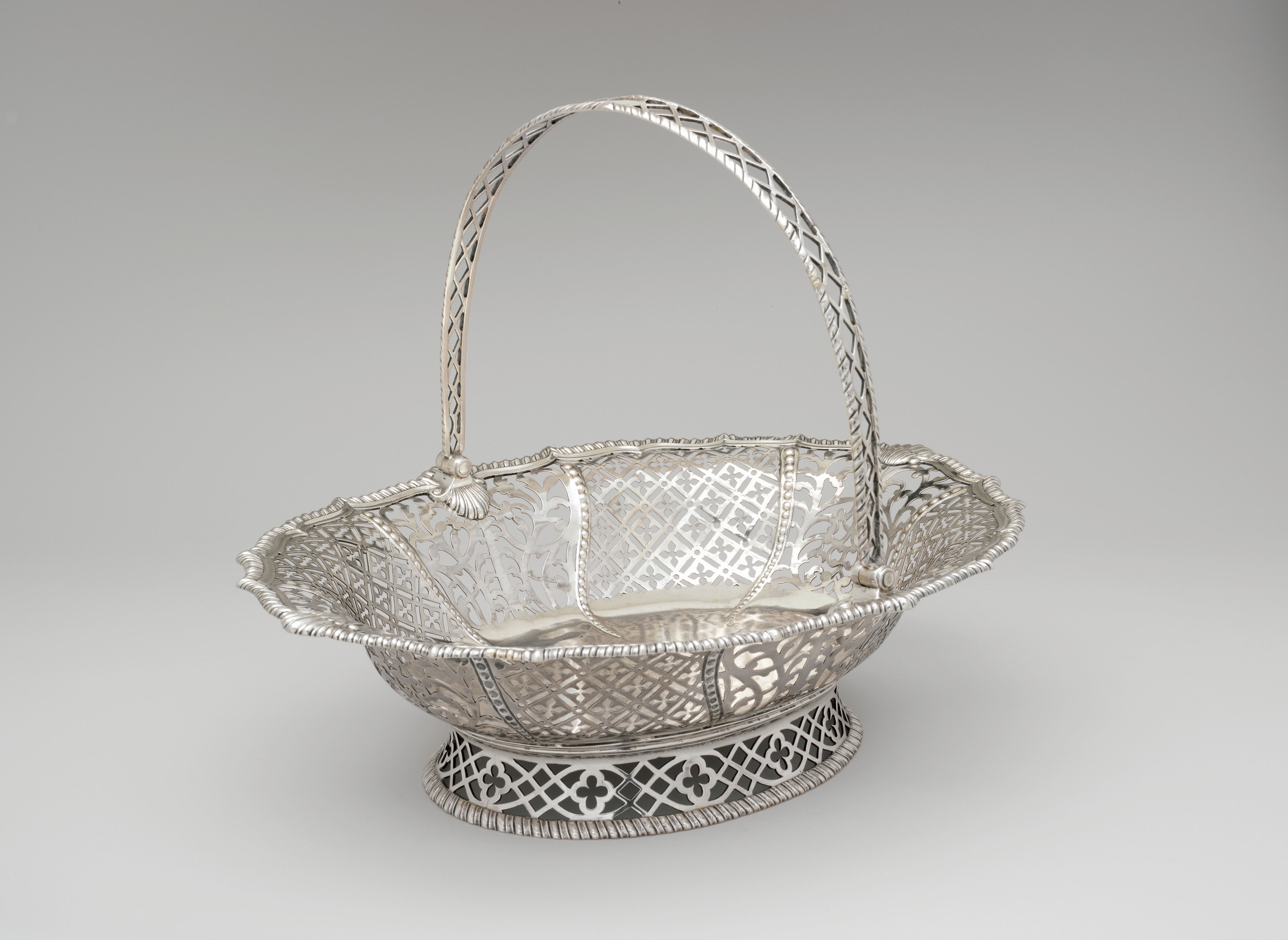 Bread basket belonging to a wealthy merchant
Bread basket belonging to a wealthy merchant
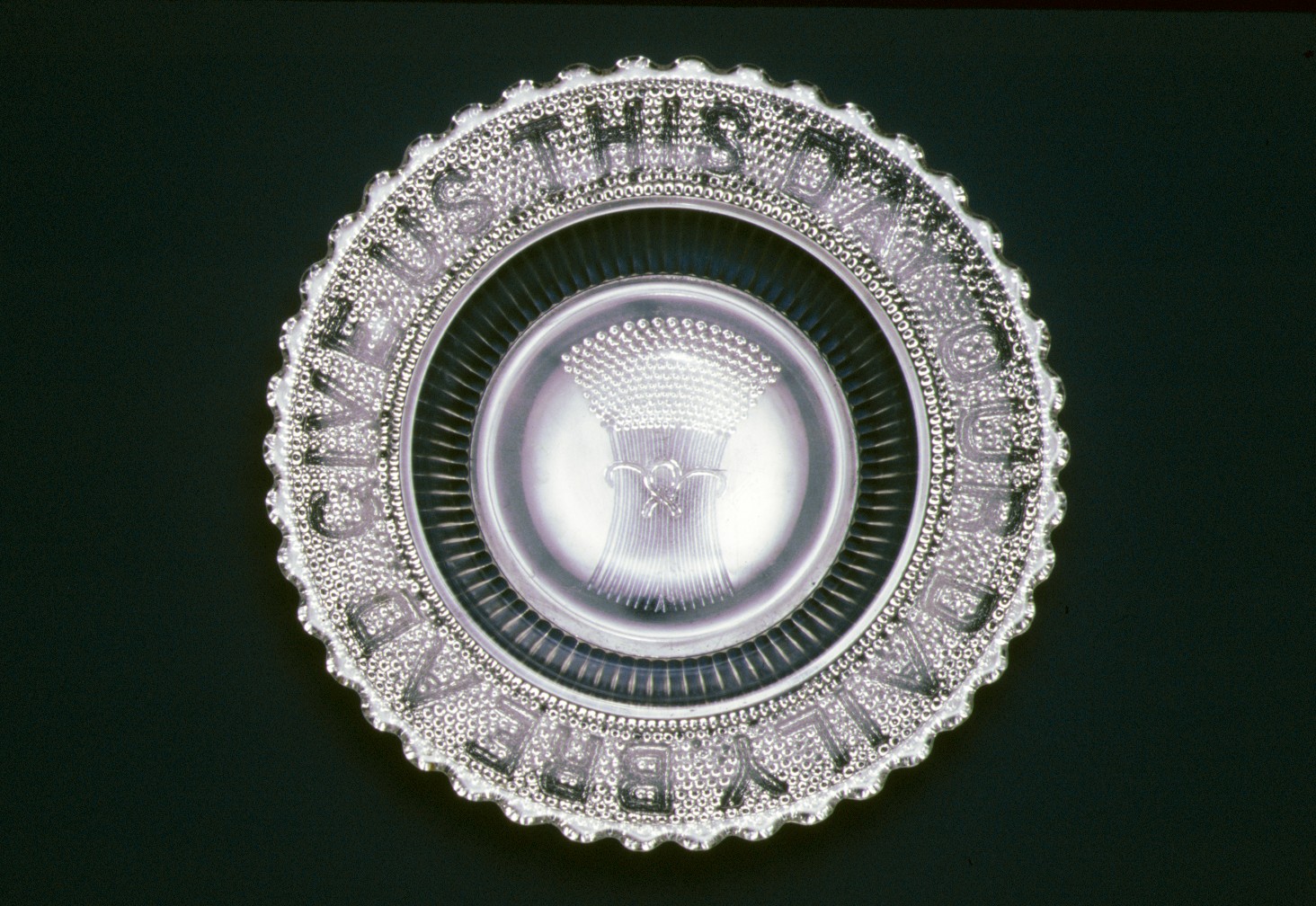 Bread plate inscribed with "Give Us This Day Our Daily Bread", a common prayer before meals
Bread plate inscribed with "Give Us This Day Our Daily Bread", a common prayer before meals

Seal by Metropolitan Museum of Art

Basket by Myer Myers

Bread Plate by Metropolitan Museum of Art

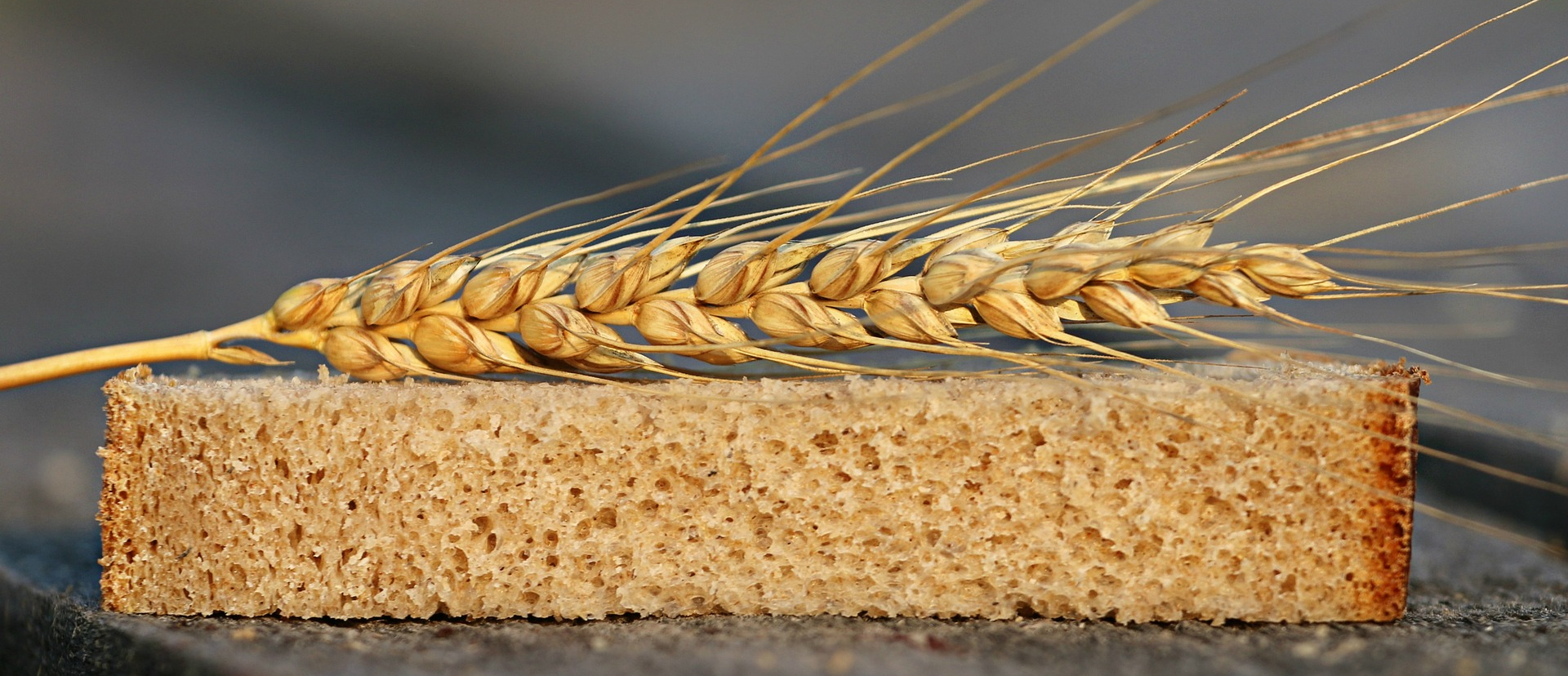

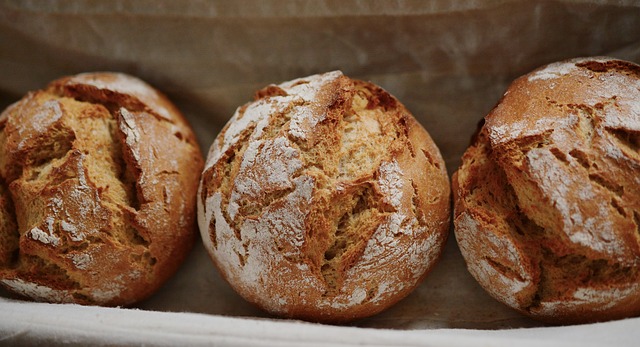
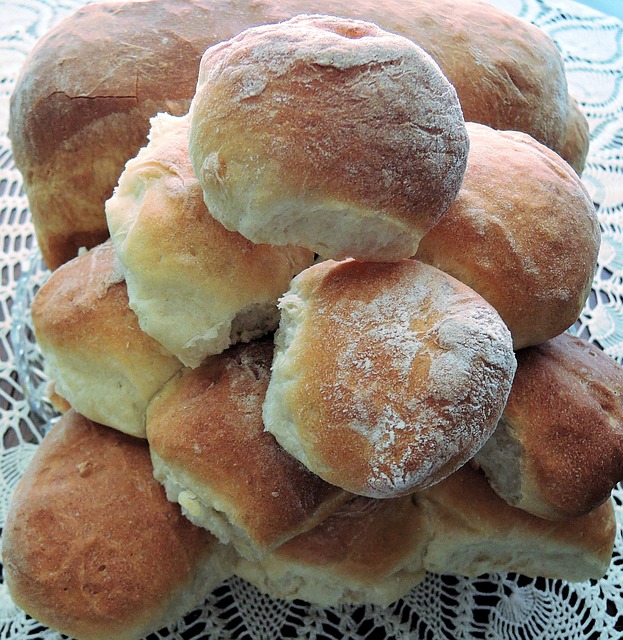

I was "leavened" reading such a culturally and socially rich article about one of my favorite foods. My favorite part of this was reading about bread in language! I think I'll be using "sweet bun" in my every day communication with loved ones. ^-^